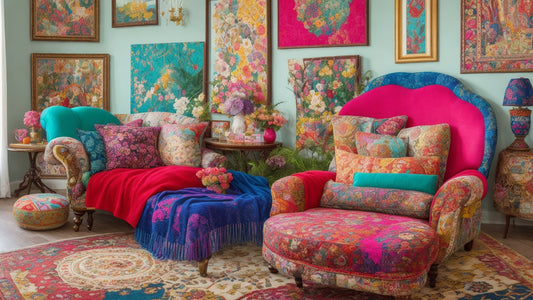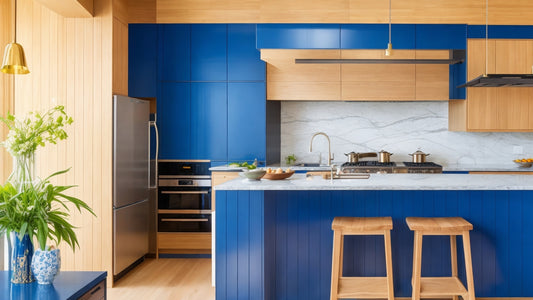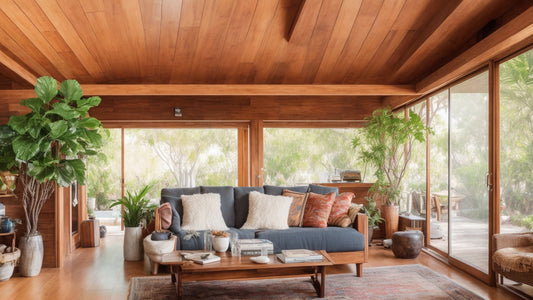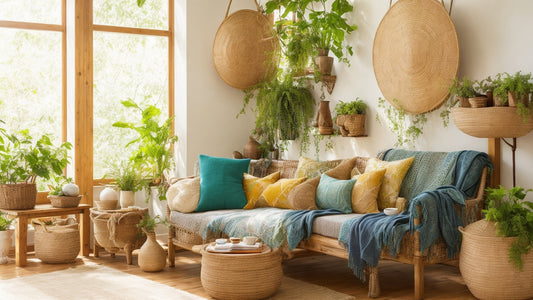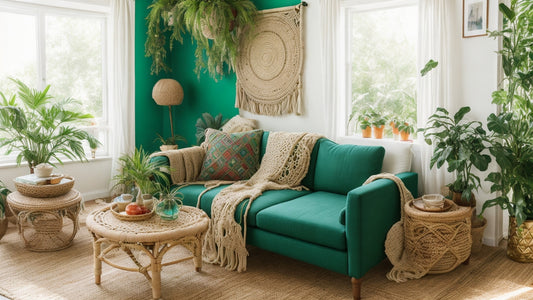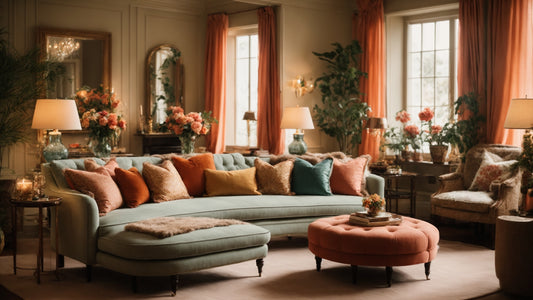A Guide to Color Psychology & Home Decor
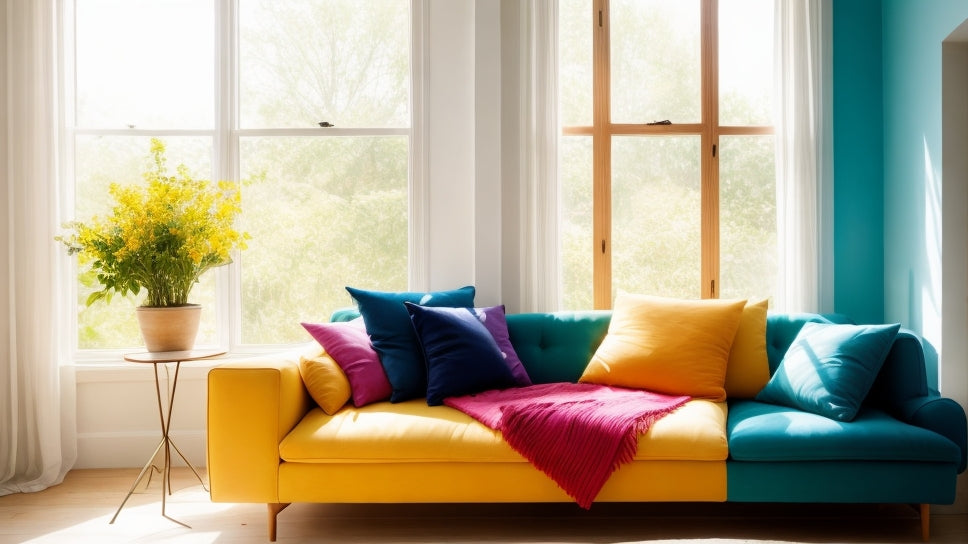
Share
Color psychology and home decor: How to create a home that reflects your personality and mood
Color is a powerful tool that can be used to create a variety of moods and atmospheres in our homes. By choosing the right colors for each room, we can create spaces that are inviting, relaxing, energizing, or creative.
Color psychology is the study of how colors affect our emotions and behaviors. It's a complex field, but there are some general principles that can be applied to home decor.
Warm colors like red, orange, and yellow are associated with energy, excitement, and passion. They can be used to create a vibrant and inviting atmosphere in a living room or kitchen. However, it's important to use warm colors sparingly, as too much can be overwhelming.
Cool colors like blue, green, and purple are associated with calmness, relaxation, and peace. They're ideal for bedrooms and bathrooms, where you want to create a relaxing space to unwind.
Neutral colors like white, gray, and beige are versatile and can be used in any room. They can be used as a base for a color scheme, or they can be used to create a minimalist and sophisticated look.
When choosing colors for your home, it's important to consider the following factors:
- The purpose of the room: What activities will take place in the room? Do you want to create a space for entertaining, relaxing, or working?
- The mood you want to create: Do you want the room to feel energizing, calming, or creative?
- Your personal preferences: What colors do you find appealing and relaxing?
Here are some specific tips for using color psychology in home decor:
- Use warm colors in spaces where you want to create a sense of energy and excitement. For example, you could use red or orange in your living room or kitchen.
- Use cool colors in spaces where you want to create a sense of calm and relaxation. For example, you could use blue or green in your bedroom or bathroom.
- Use neutral colors as a base for your color scheme. You can then add pops of color with accessories, such as pillows, throws, and artwork.
- Consider the size of the room when choosing colors. Dark colors can make a small room feel smaller, while light colors can make a small room feel larger.
- Use complementary colors to create a sense of balance. For example, you could use blue and orange together, or green and red together.
- Use analogous colors to create a sense of harmony. For example, you could use blue, green, and teal together, or yellow, orange, and red together.
Here are some specific color combinations for different rooms in your home:
Living room:
- Red and yellow: A vibrant and inviting color combination that is perfect for entertaining.
- Orange and blue: A warm and calming color combination that is ideal for relaxing.
- White and gray: A minimalist and sophisticated color combination that can be dressed up or down.
Bedroom:
- Blue and green: A calming and relaxing color combination that is perfect for sleep.
- Purple and gray: A luxurious and romantic color combination.
- White and beige: A classic and versatile color combination that can be easily adapted to your personal style.
Kitchen:
- Yellow and orange: A cheerful and energizing color combination that is perfect for cooking and baking.
- Red and white: A classic and timeless color combination that is perfect for a modern kitchen.
- Green and brown: A natural and earthy color combination that is perfect for a rustic kitchen.
Bathroom:
- Blue and white: A classic and refreshing color combination that is perfect for a bathroom.
- Green and brown: A natural and relaxing color combination that is perfect for a spa-like bathroom.
- Gray and beige: A modern and sophisticated color combination that is perfect for a bathroom with clean lines.
No matter what colors you choose, make sure that they reflect your personality and style. Your home should be a place where you feel comfortable and relaxed.
Here are some additional tips for using color psychology in home decor:
- Use color to create focal points. For example, you could paint an accent wall in a bold color, or you could place a colorful piece of artwork in a central location.
- Use color to highlight architectural features. For example, you could paint your moldings in a contrasting color, or you could use accent lighting to highlight a fireplace or other architectural detail.
- Use color to create a sense of flow between rooms. For example, you could use the same color scheme in adjacent rooms, or you could use complementary colors in different rooms.
- Consider the time of day when using color. For example, you might want to use warm colors in your living room, where you spend a lot of time during the day. However, you might want to use cooler colors in your bedroom, where you want to relax and unwind at night.
- Use color to create a sense of balance and harmony. For example, if you have a lot of natural light in a room, you can use darker colors to create a more grounded and cozy space. Conversely, if you have a darker room, you can use lighter colors to brighten the space and make it feel more open.
- Don't be afraid to use bold colors. A pop of a bold color can really add interest and personality to a room. However, it's important to use bold colors sparingly, as too much can be overwhelming.
- Use color to express your personality. Your home should reflect your unique style and personality. So don't be afraid to experiment with different colors and combinations until you find a look that you love.
Here are some specific examples of how to use color psychology in home decor:
- If you have a small living room, you can use light colors to make the room feel larger and more open. You can also use mirrors to reflect light and create a sense of spaciousness.
- If you have a large kitchen, you can use darker colors to create a more intimate and inviting space. You can also use accent lighting to highlight certain areas of the kitchen, such as an island or breakfast nook.
- If you have a bedroom that gets a lot of natural light, you can use cooler colors to create a more calming and relaxing space. You can also use blackout curtains to darken the room at night.
- If you have a bathroom that is small and cramped, you can use light colors and large mirrors to create a sense of spaciousness. You can also use accent lighting to highlight certain areas of the bathroom, such as a vanity or bathtub.

